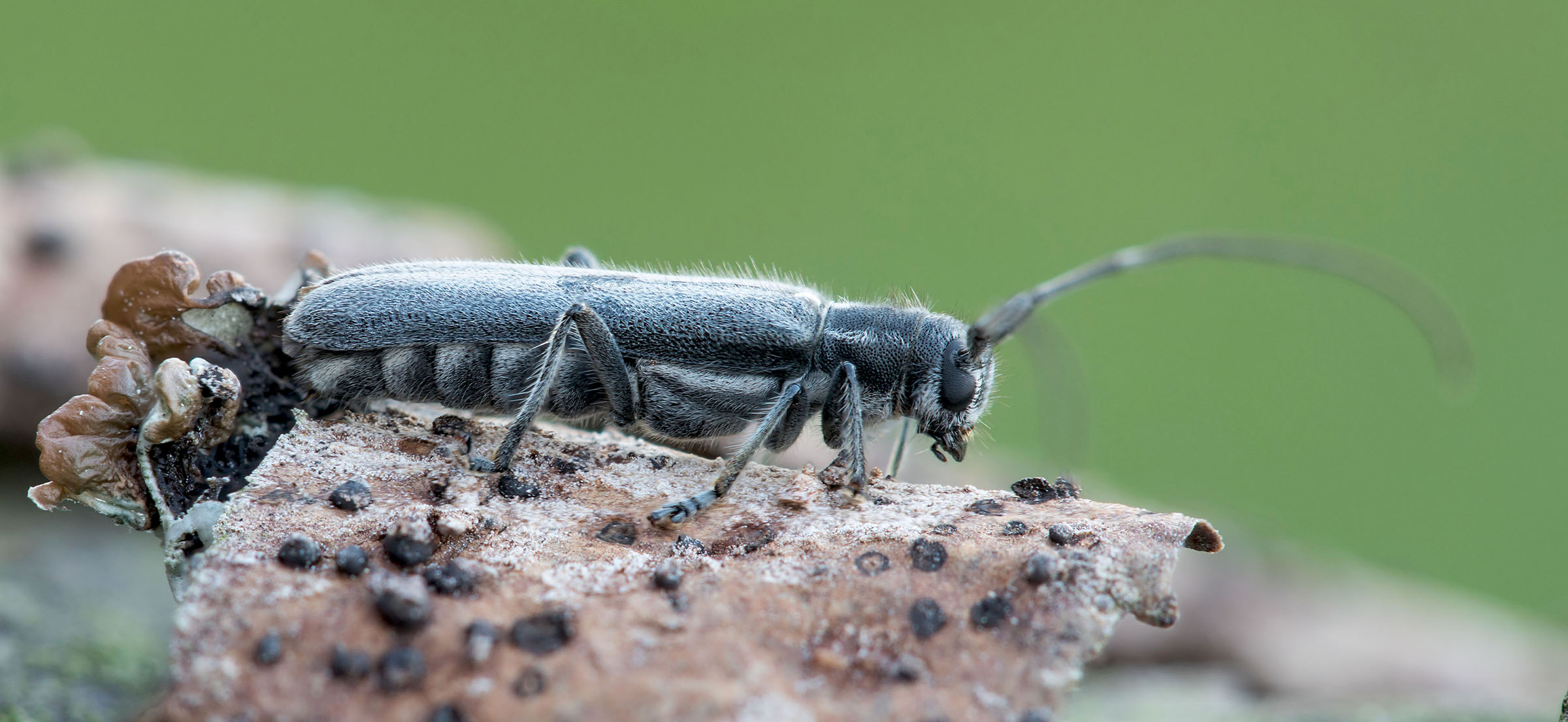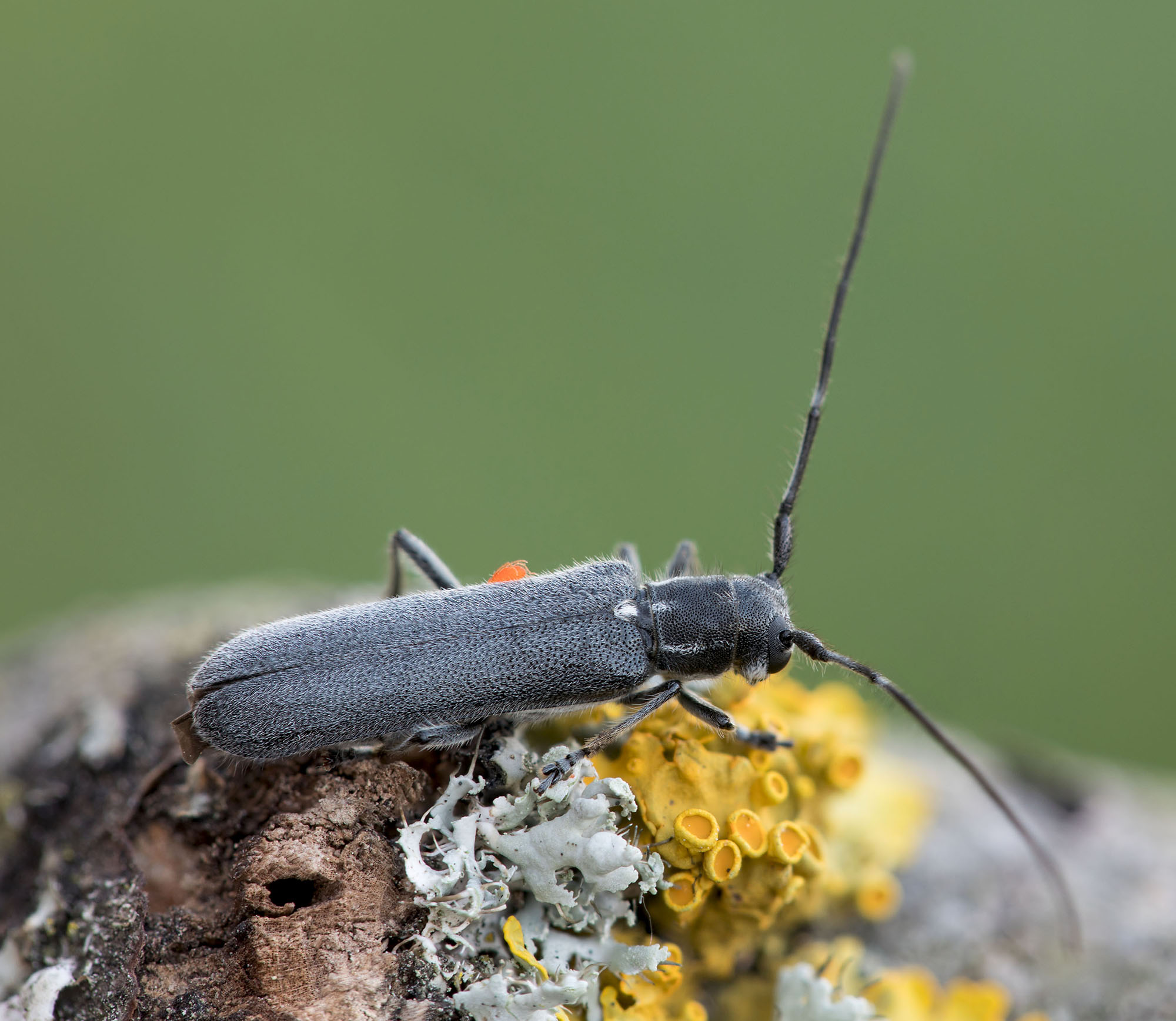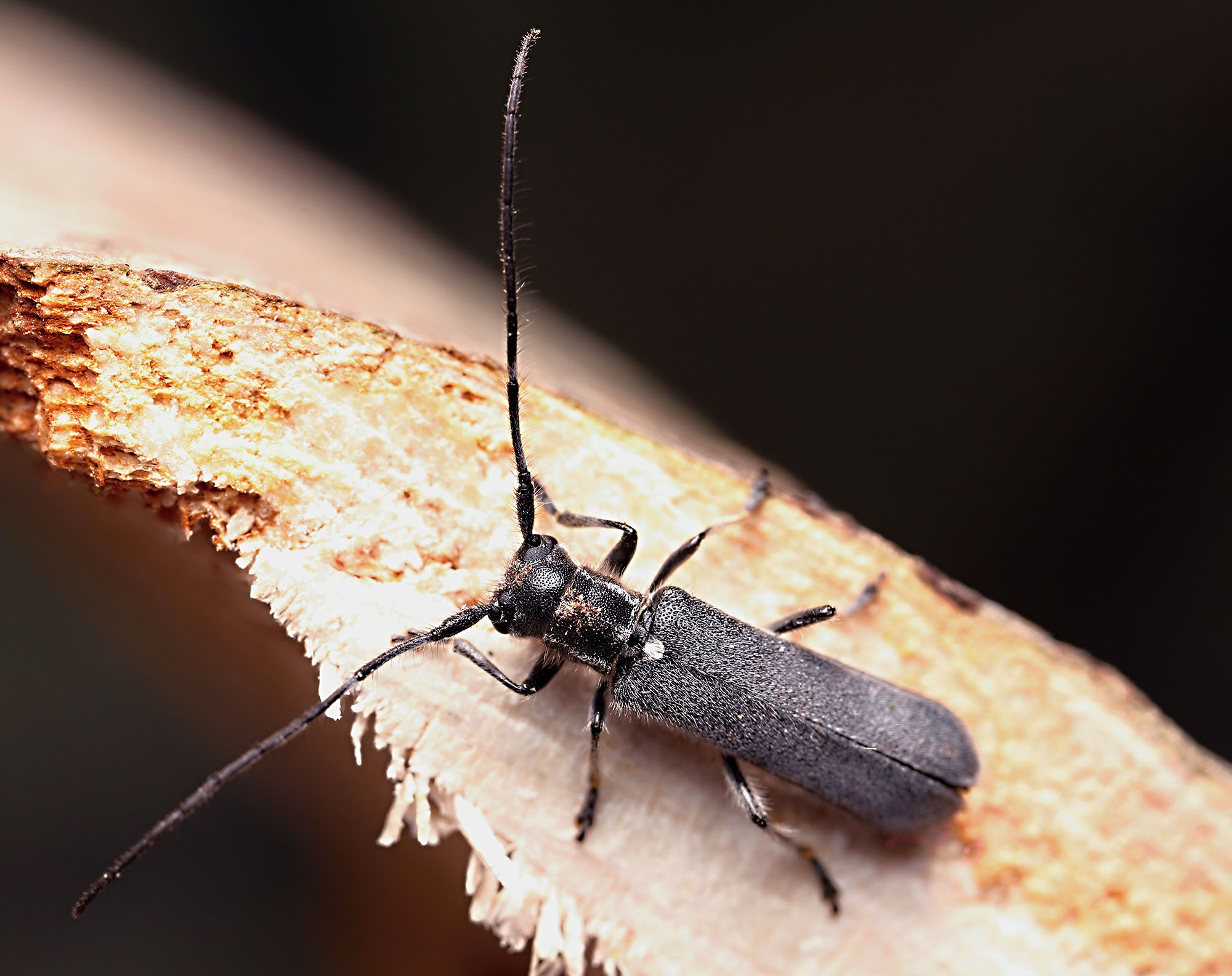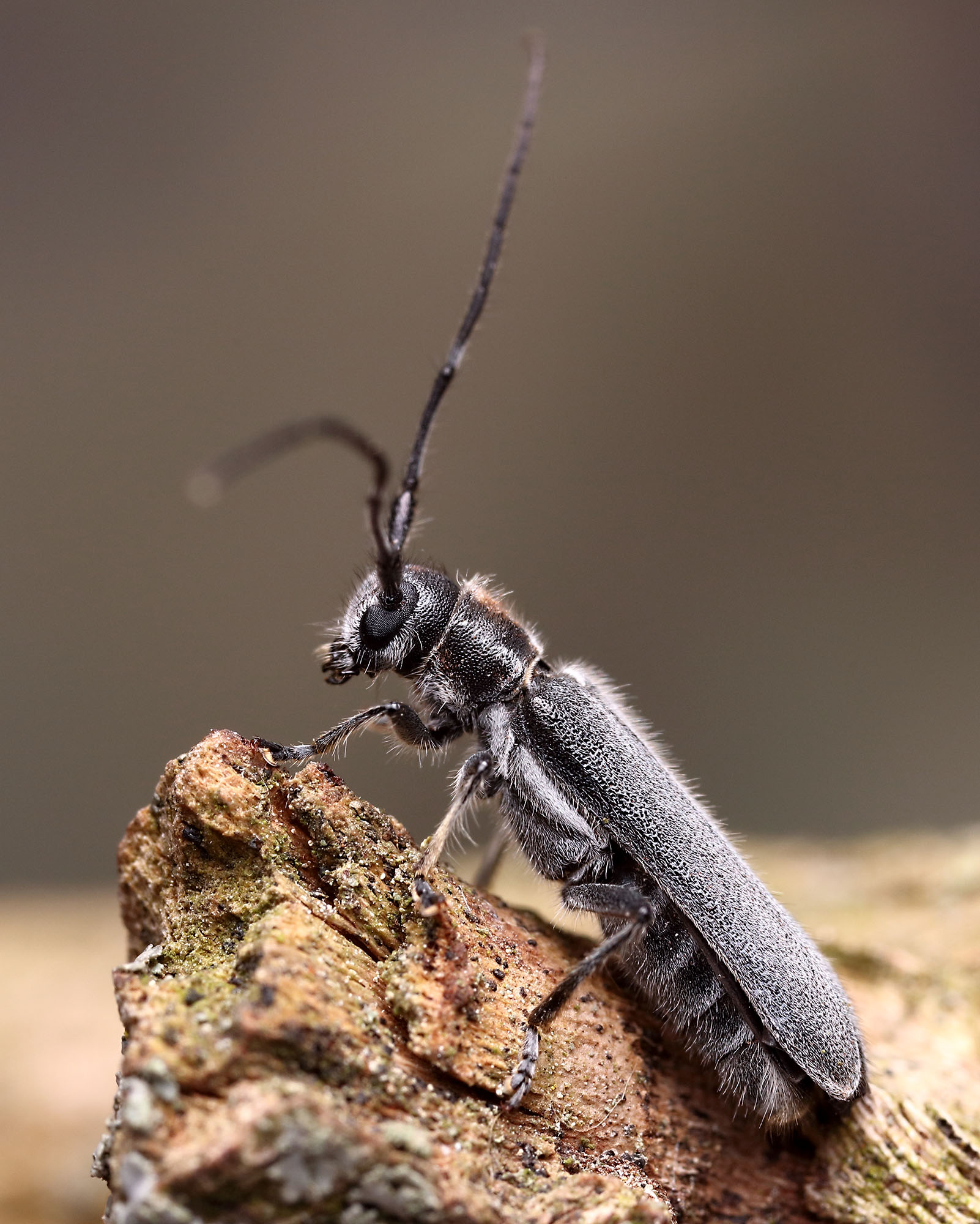ssp. ferrea (Schrank, 1776)

[Photo © Daniel Rydzi]
Stenostola ferrea, a widely distributed Euro-Caucasian species, has been described as Cerambyx ferreus from Linz environs (Austria) by Franz von Paula Schrank in 1776 [✧]. The S. ferrea larvae develop in dead thicker twigs, branches and slender stems (up to 20 cm in diameter) of Tilia cordata, development in other deciduous trees published in many older works need confirmation. Authors of this site reared hundreds of S. ferrea specimens from larvae (1990-2020) only from lime. Unlike the sister species S. dubia (Laicharting, 1784), S. ferrea has relatively strict demand to the quality of substrate and prefers dry wood (high humidity and fungal growth might be fatal for the larvae). The wood infestation can be massive and many larvae may live in the same part of host tree. The Larvae feed subcortically with galleries usually made only in the bark while the sapwood remains intact, with the exception of wood with a very thin bark. The mature larvae create a typical hook-shaped pupal cell in the wood. If the bark is thick, the pupation may take place in the bark. Pupation in spring, the life-cycle is one to two years. Adults, active from from late spring to summer, feed on the leaves and fresh bark of the host trees [❖]. S. ferrea and S. dubia are often confused or misidentified, although they are two well-separated species differing in both morphology of adults (especially genitalia) and developmental stages, DNA markers, and bionomy. All these aspects were brilliantly described in the works of Torstein Kvamme, Henrik Wallin and Kersti S. Kvie [❖][★].
Body length: 8 - 14 mm Life cycle: 1 - 2 years Adults in: May - July Host plant: lime (Tilia sp.) Distribution: Austria, Belarus, Bosnia and Herzegovina, Bulgaria, Croatia, Czechia, Denmark, Estonia, Finland, France, Germany, Hungary, Italy, Latvia, Lithuania, Moldova, Norway, Poland, Romania, Russia, Slovakia, Slovenia, Spain, Switzerland, Ukraine, Azerbaijan, Georgia, Armenia, Turkey
The depicted beetles were: photographed in Králův Dvůr-Zahořany (Beroun district, Central Bohemia, Czechia) on June 4, 2019 (DR); reared from larva found in dead lime (Tilia cordata) in Křivoklátsko Protected Landscape Area (Central Bohemia, Czechia) in winter 2020 (MP).Collected by Daniel Rydzi and Miroslav Polcar
[✧]
von Paula Schrank F.:
Beyträge zur Naturgeschichte.
Leipzig, Fritsch 8: 137pp, 1776. [download]
[❖]
Kvamme T. and Wallin H.
The genus Stenostola Dejean, 1835 (Coleoptera, Cerambycidae) in Norway, with a review of the biology and the distribution in Fennoscandia.
Norwegian Journal of Entomology 58, 93–108, 2011. [download]
[★]
Kvamme T., Wallin H. and Kvie K.S.:
Taxonomy and DNA barcoding of Stenostola ferrea (Schrank, 1776) and S. dubia (Laicharting, 1784) (Coleoptera, Cerambycidae, Saperdini).
Norwegian Journal of Entomology 59, 78–87, 2012. [download]

[Photo © Daniel Rydzi]

[Photo © Milan Lovětínský]

[Photo © Milan Lovětínský]
| Subfamilia | Lamiinae Latreille, 1825 |
| Tribus | Saperdini Mulsant, 1839 |
| Genus | Stenostola Dejean, 1835 |
| Species | Stenostola ferrea (Schrank, 1776) |
| Subspecies | Stenostola ferrea ferrea (Schrank, 1776) |
